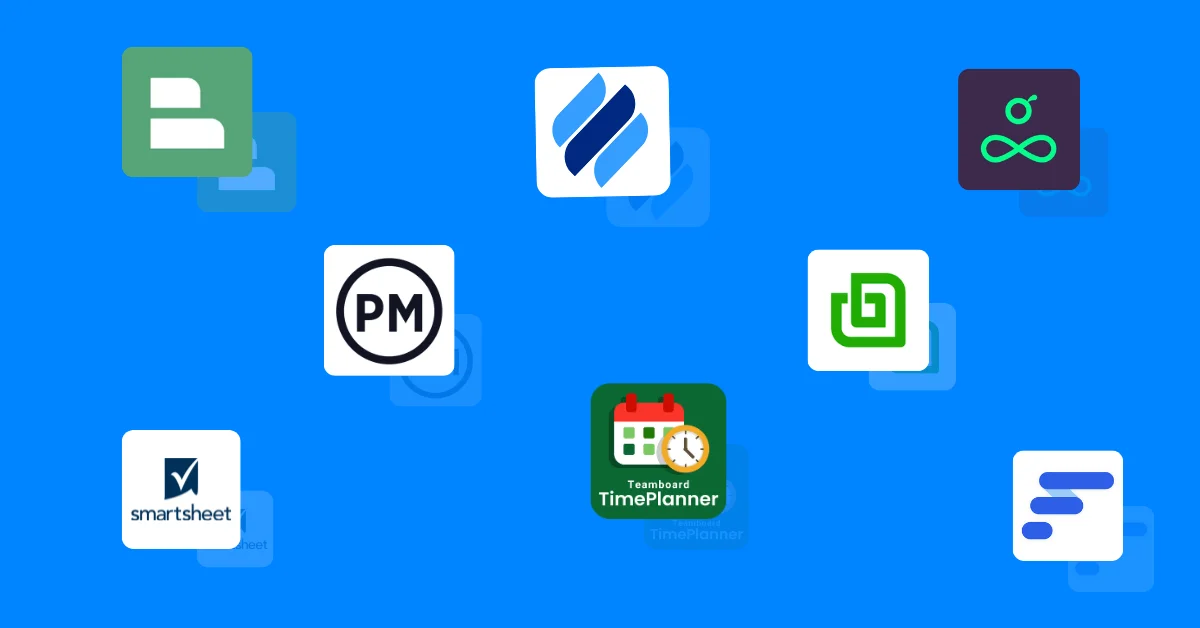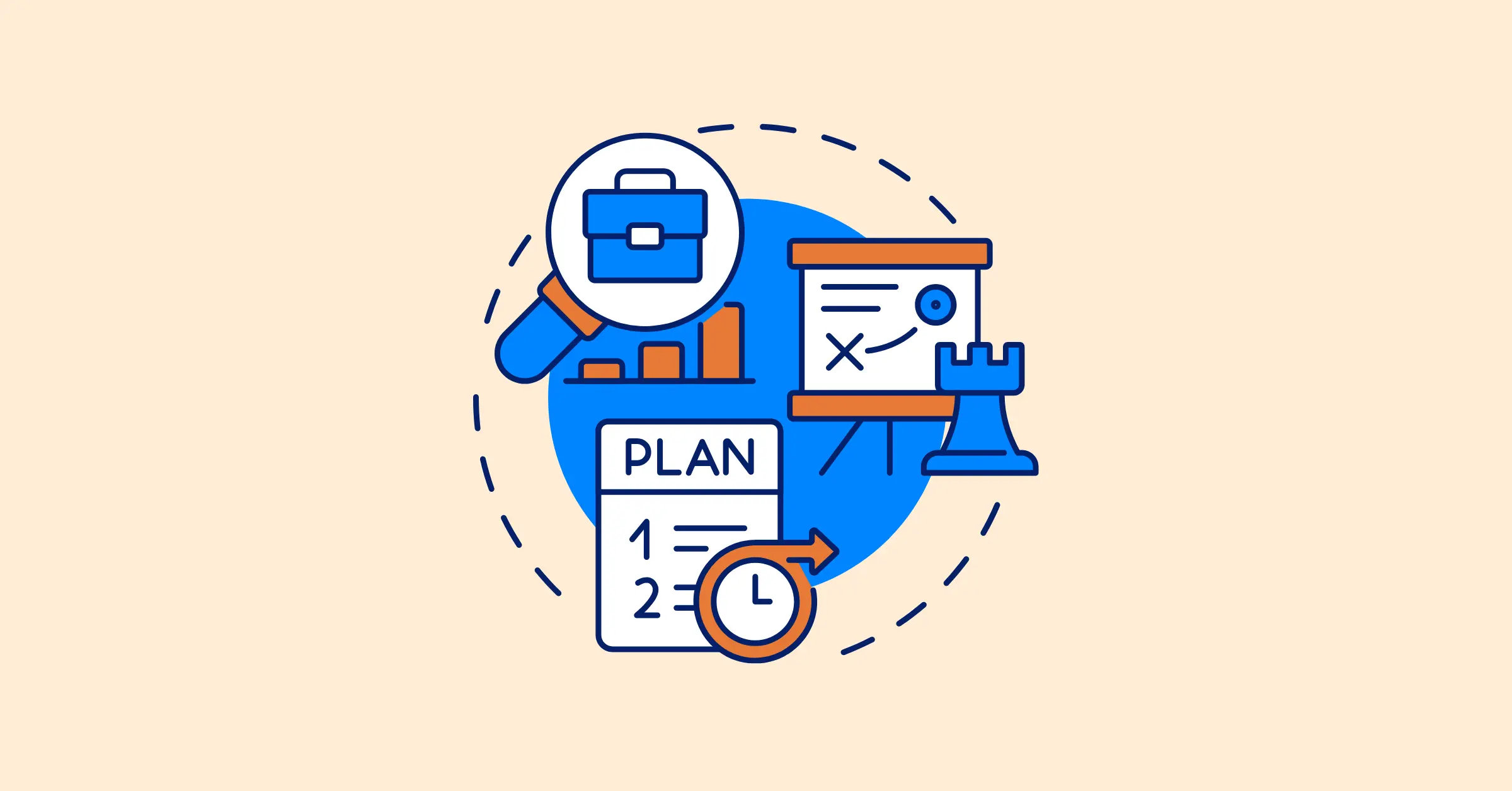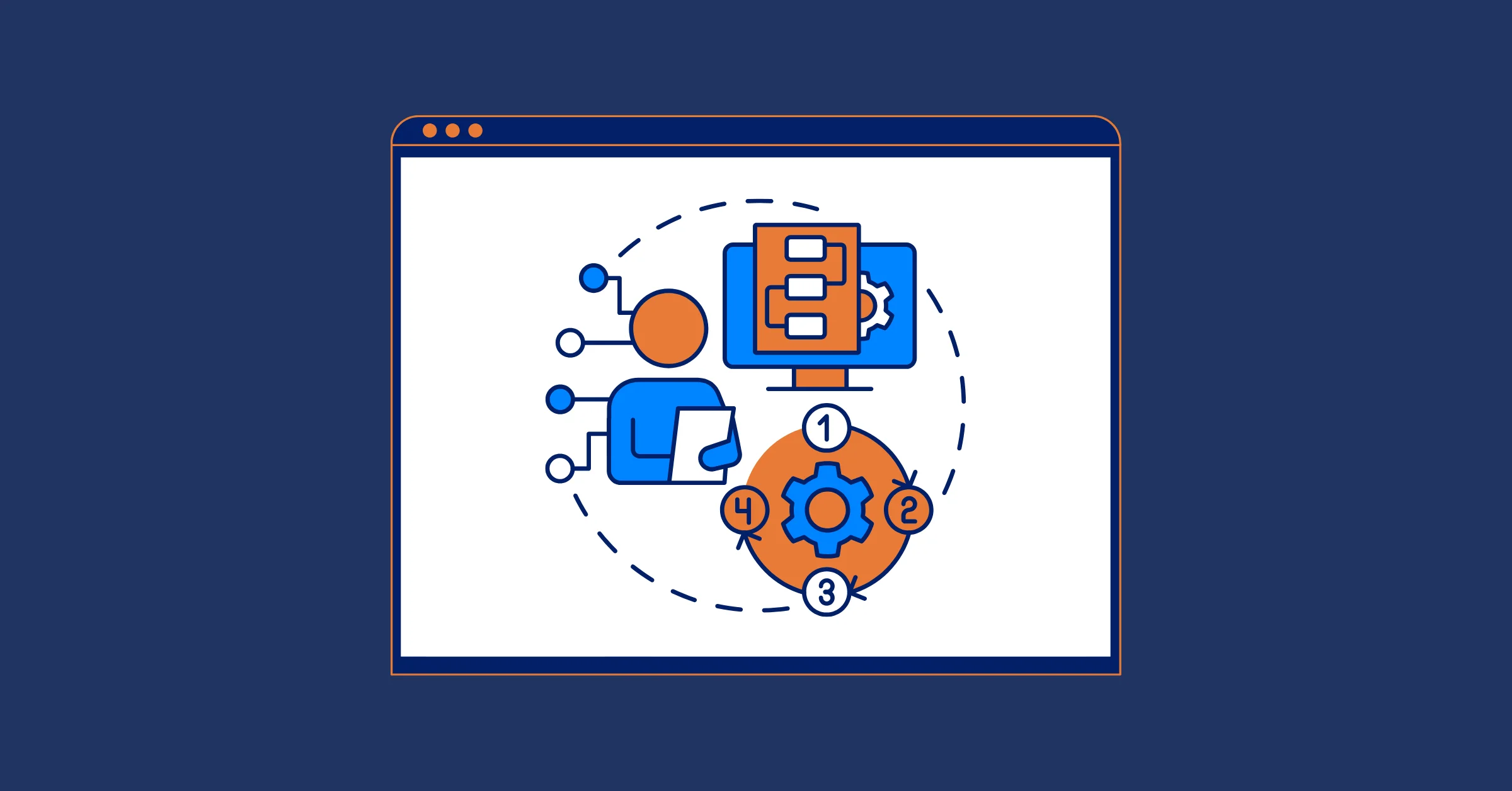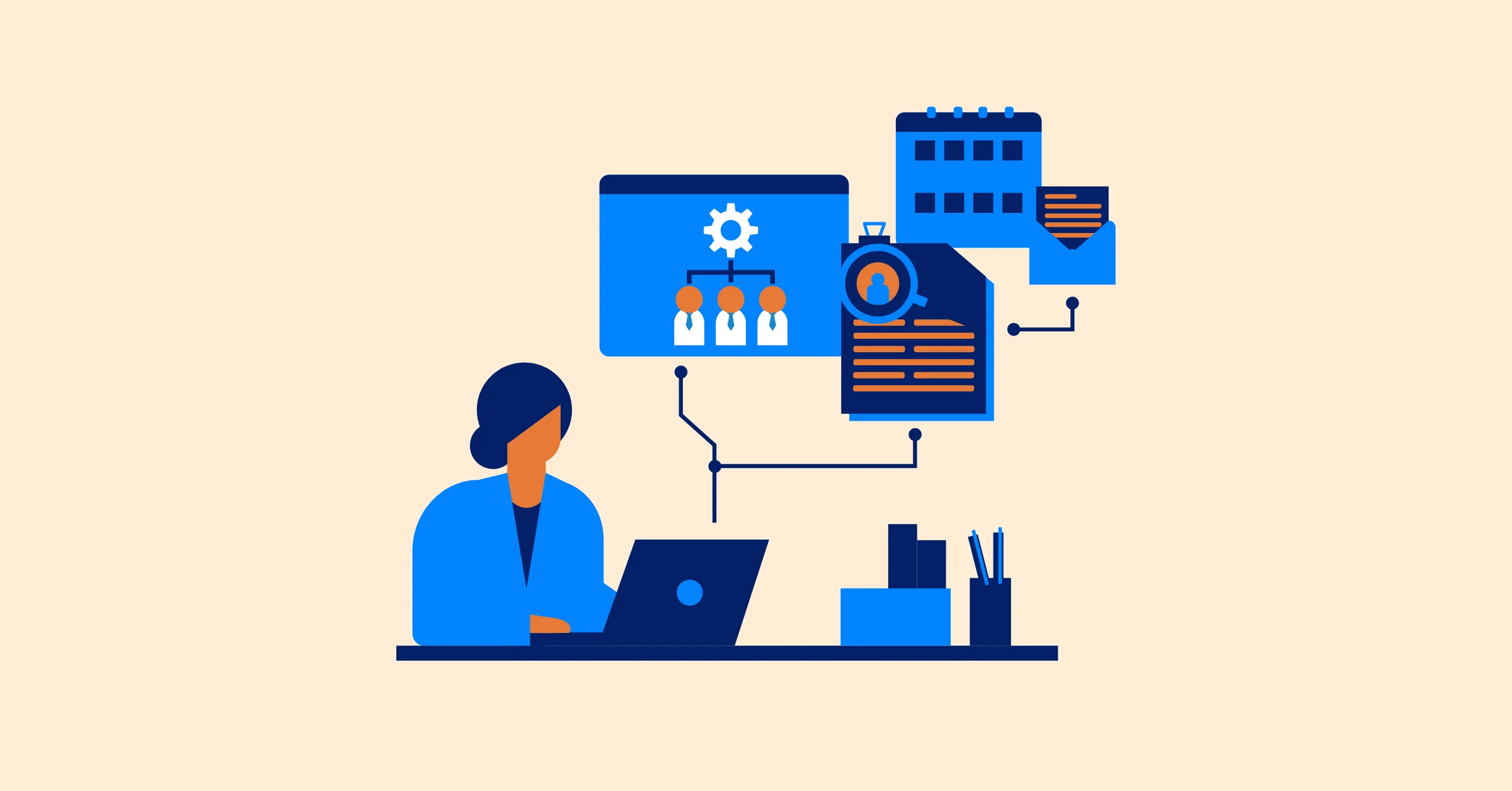7 Insider Tips to Reduce Burnout on a Project Before It Affects Your Team
Practical tips to reduce burnout on a project by managing workloads, improving communication, and promoting team well-being.
Burnout doesn’t usually start with someone saying, “I’m burned out.” It shows up in quieter ways, slower replies, mistakes that didn’t happen before, tension in meetings, or a once-engaged team suddenly going quiet. By the time it’s obvious, it’s already affecting the project.
That’s why knowing how to reduce burnout on a project — not just fix it after it happens — is so important.
According to Deloitte survey, 77% of professionals report experiencing burnout at their current job, and it’s one of the leading causes of missed deadlines, team turnover, and stalled projects. But here’s the good news: you don’t need to overhaul everything to make a difference. Often, a few small, consistent shifts in how you manage time, people, and expectations can protect your team from hitting that wall in the first place.
In this post, we’ll walk through 7 practical tips that any project lead, team manager, or team member can apply, even mid-project, to help prevent burnout before it affects the outcome.
Understanding Burnout and Why It’s Critical
Burnout is more than just being tired or busy — it’s a prolonged state of emotional, physical, and mental exhaustion caused by ongoing stress, especially in high-pressure projects.
When left unchecked, burnout doesn’t just affect individuals; it drags down the entire team. You’ll see missed deadlines, more mistakes, team tension, and eventually, people pulling back or quitting altogether. And it’s not always about workload alone. It can come from unclear expectations, constant changes, lack of recognition, or not feeling in control of your work.
What makes burnout critical in project environments is its timing: it often surfaces at the worst possible moment — midway through delivery or right before a major milestone — when momentum is needed most.
That’s why prevention is key. You can’t always make projects easy, but you can make them more sustainable.
Difference Between Burnout and Boreout
Burnout often gets more attention, but boreout — a state caused by chronic under-stimulation, can be just as harmful to project teams.
Burnout typically occurs when an individual is overwhelmed by an excessive workload, ongoing pressure, or a lack of support. It builds over time and often results in emotional exhaustion, frustration, and detachment.
Boreout, in contrast, happens when work feels repetitive, unchallenging, or disconnected from a larger purpose. It may seem less urgent, but it quietly reduces motivation, engagement, and overall performance.
Here’s how the two differ at a glance:
| Burnout | Boreout |
|---|---|
| Too much work or pressure | Too little work or challenge |
| High stress, long hours | Boredom, disengagement |
| Feeling overwhelmed | Feeling undervalued or ignored |
| May lead to emotional exhaustion | May lead to loss of motivation |
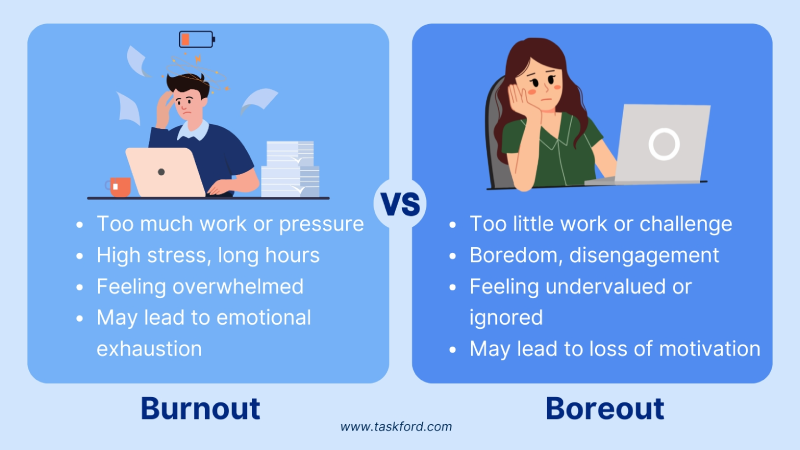
Both conditions quietly affect project performance, just in different ways, one through overload, the other through lack of purpose. It’s important to recognize the difference, especially when working with diverse roles and team dynamics.
How to Reduce Burnout on a Project
Burnout can derail even the most promising projects, sapping energy and undermining success. By addressing it proactively, you can sustain your team's momentum and well-being. Here are seven practical strategies to prevent burnout and foster a healthier project environment.
Tip #1: Set Realistic Foundations at the Kickoff
Burnout can start before the real work even begins, during planning. When a project kicks off with tight deadlines or vague expectations, the pressure begins to build from day one.
It’s common to agree to every request just to get the green light or satisfy stakeholders. But if the timeline isn’t realistic, your team ends up rushing, working overtime, or cutting corners just to keep up.
That pressure doesn’t stay quiet for long. It builds into stress, frustration, and eventually burnout, especially when the team feels they’re behind before they’ve even started.
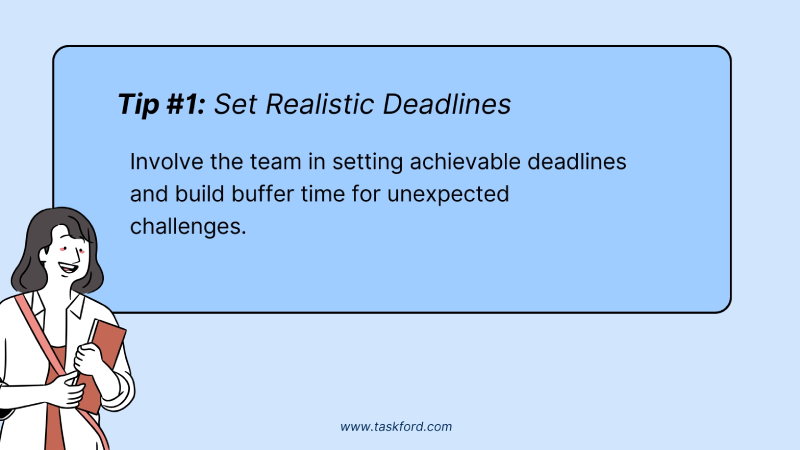
Signs to Watch For:
- Hesitation or silence during planning discussions
- Early concerns about timeline feasibility
- Schedules with no room for breaks or unexpected delays
Actions to Take: Before locking in the plan, conduct a reality check with your team. Ask:
“Where does this timeline feel stretched?”
“Is there enough buffer for unforeseen challenges?” Incorporating team input early ensures a schedule that’s ambitious yet achievable, reducing the risk of burnout from the start.
Tip #2: Pay Attention to Workload, Not Just Assigned Tasks
Burnout often happens when team members are overloaded, but not necessarily in ways that show up on a task board. Someone might have only a few tasks assigned in your project management tool, but they’re also juggling internal meetings, client support, documentation, or last-minute requests.
It’s easy to assume the workload is balanced just because the task list looks even. But what truly matters is resource management, ensuring each team member has enough time and focus to handle their responsibilities without burning out. Effective resource planning helps you allocate tasks and manage time efficiently to avoid overloading individuals.
According to Gallup, employees with unmanageable workloads are over two times more likely to feel burned out, even when they appear productive on the surface.
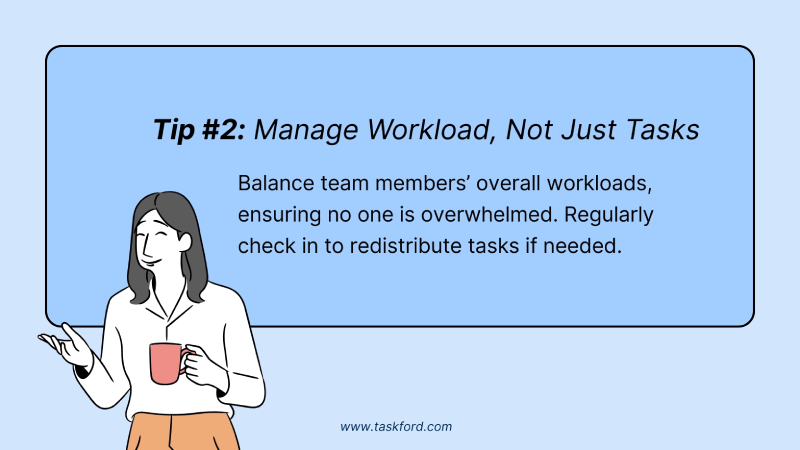
Signs to Watch For:
- Consistent late hours or weekend work
- Delayed responses to messages
- Skipping breaks or withdrawing from meetings
Actions to Take: Check in regularly on time management, not just task progress. Ask:
“Do you have enough time to do this well?”
“Is anything pulling you away from your priorities?” Small workload adjustments can prevent overwhelm, keeping energy levels stable.
You don’t need to micromanage. Just make sure people aren’t quietly carrying too much. Even small redistributions of work can go a long way toward preventing burnout before it starts.
Tip #3: Foster Open, Ongoing Communication
One of the earliest signs of burnout isn’t visible — it’s silence. When team members feel uncomfortable sharing that they’re overwhelmed or behind, they often choose to quietly cope. Over time, this creates emotional distance, builds internal pressure, and leads to burnout that goes unnoticed until performance drops.
In high-stakes or fast-moving projects, people may avoid speaking up out of fear of slowing progress or being seen as underperforming.
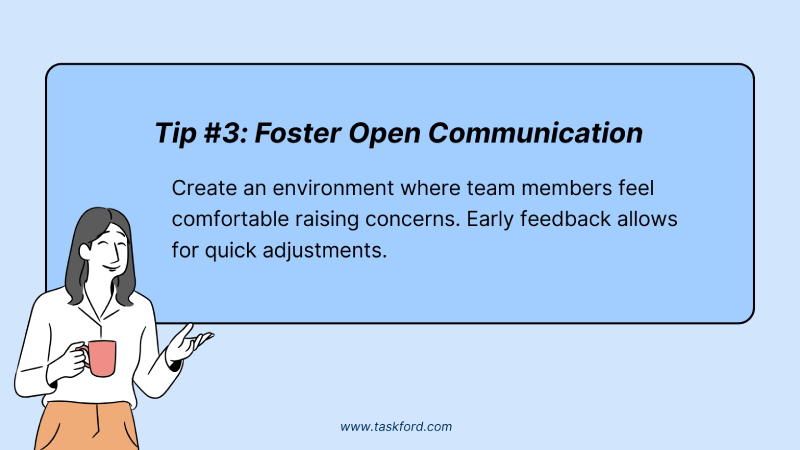
Signs to Watch For:
- Passive agreement without active engagement
- Reluctance to seek help or clarify expectations
- Sudden drops in quality or missed deadlines
Actions to Take: Build psychological safety by modeling transparency and inviting feedback. In group or one-on-one settings, ask:
“What’s harder than it should be right now?”
“Is there anything you’re hesitant to raise?” Creating a culture where concerns are welcomed helps catch issues before they escalate.
It’s not about solving everything immediately; it’s about making communication safe and expected.
Tip #4: Make Rest and Recovery Part of the Project Plan
In most projects, schedules are built to optimize efficiency, not human energy. But creative, thoughtful, high-quality work needs recovery time. If you run the team at full pace from start to finish, you don’t just risk burnout; you risk burnout at the worst possible moment — during the final stretch.
Recovery can’t just be reactive (“Take a break if you need it”). It needs to be designed into how the project runs.
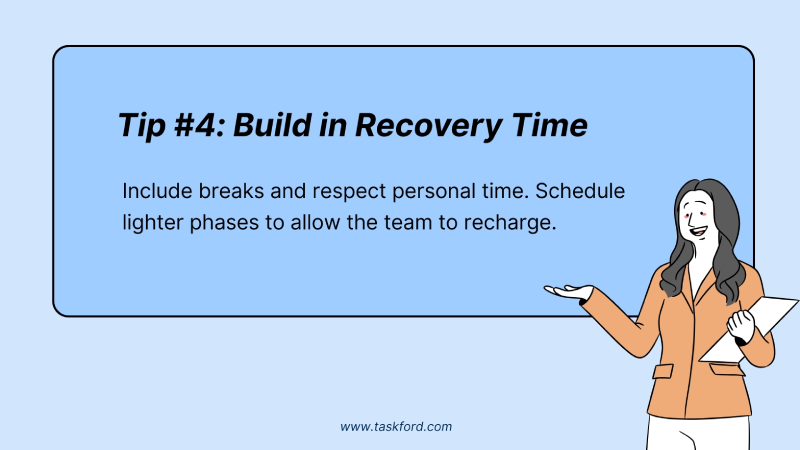
Signs to Watch For:
- Extended hours without breaks between phases
- Constant context-switching without downtime
- Postponed or canceled vacation requests
Actions to Take: Design recovery into the timeline. For example:
- Schedule lighter weeks after major milestones
- Reserve “no-meeting” blocks for focus or reset
- Add buffer time to milestones for unexpected demands.
- These structural pauses signal that long-term performance trumps short-term sprints.
This signals that sustained performance matters more than short bursts of output, and it helps prevent mental fatigue from accumulating.
Tip #5: Acknowledge Progress and Effort Consistently
In long or complex projects, it’s easy to focus on deliverables while overlooking effort. But when people feel unseen, especially while working under pressure, motivation fades — even if the project is technically “on track.”
Recognition is one of the simplest yet most effective ways to boost engagement and resilience. When people feel valued, they’re more likely to stay connected to the work and the team.
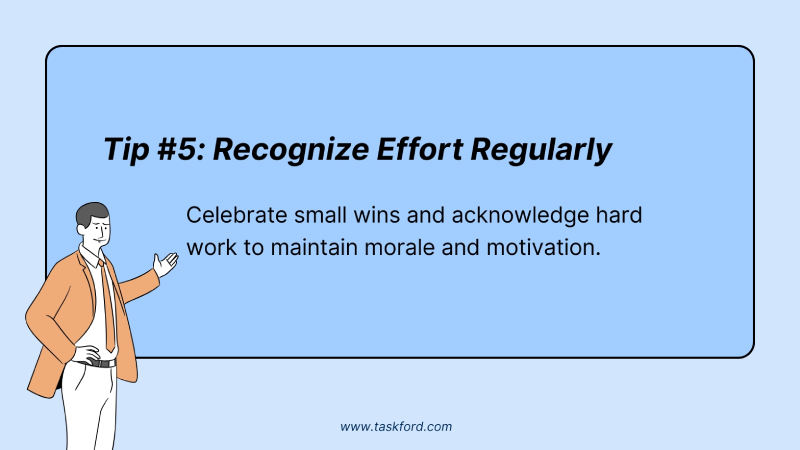
Sign to Watch For:
- Declining team morale despite steady output
- Frustration around unacknowledged contributions
- Individuals are becoming less responsive or less collaborative over time
Action to Take: Weave recognition into your regular routines. This could mean:
- A short “shout-out” segment in stand-ups or weekly check-ins
- Highlighting team wins in status updates
- Calling out behind-the-scenes efforts (not just outcomes)
Recognition doesn’t have to be formal; just consistent and specific. A well-timed “Thank you for handling that with care” can go further than a generic “Great job.”
Tip #6: Stay Alert to the Early Indicators of Burnout
Burnout rarely arrives without warning. It tends to build gradually, through missed cues and overlooked signals, until someone disengages completely or leaves. The earlier you recognize these signs, the easier it is to intervene and adapt.
In cross-functional teams, this is especially important, as the symptoms of burnout might vary by role, personality, or work style.
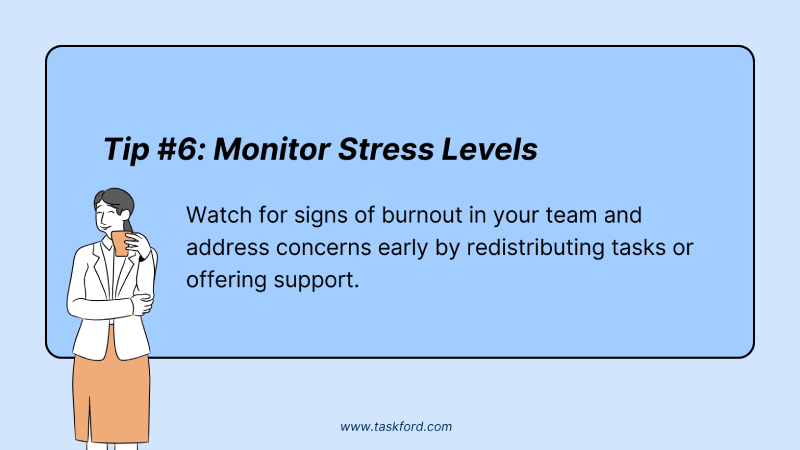
Signs to Watch For:
- Increased irritability, detachment, or emotional outbursts
- Work delivered late, or just “going through the motions”
- A shift in tone, less optimism, more withdrawal or apathy
Actions to Take
Rather than waiting for people to say “I’m overwhelmed,” create regular space to talk about energy and clarity, not just tasks. In 1:1s, ask:
“What’s starting to feel unsustainable?”
“What do you wish we could shift or pause right now?”
Listen for emotional tone as much as content. The goal isn’t to eliminate all stress — it’s to prevent overload from becoming the norm.
Tip #7. Reflect and Adjust Mid-Project — Not Just at the End
Most teams run retrospectives after delivery. But by then, the damage is done. Reflection mid-project helps teams adapt while there’s still time to correct the course, and it helps prevent burnout caused by unresolved issues that drag on too long.
Projects evolve. So should your ways of working.
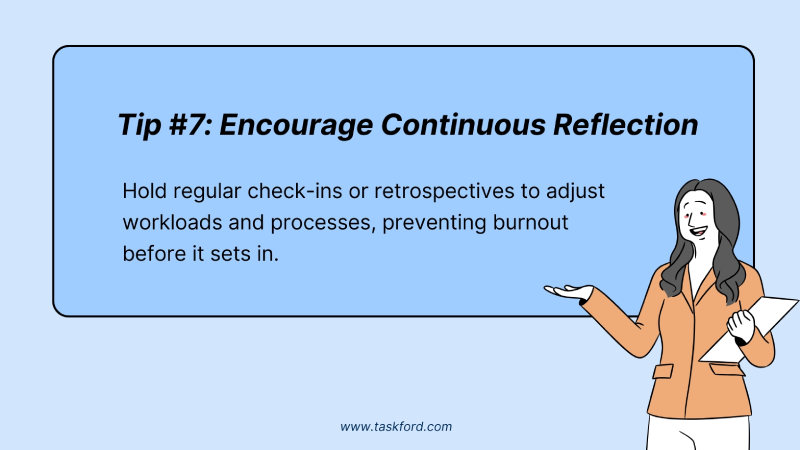
Signs to Watch For:
- Recurring inefficiencies or frustrations that go unaddressed
- Momentum stalling mid-project
- Teams are going into “just finish it” mode, with visible fatigue
Actions to Take: Schedule short, focused “pulse retros” during key phases — especially in multi-month projects. Ask questions like:
“What’s helping us move forward?”
“What’s holding us back that we haven’t talked about yet?”
Keep the tone constructive, and frame adjustments as part of progress, not failure. These mid-course corrections reduce frustration, improve delivery, and show the team that their input shapes how things move forward.
Conclusion
Burnout doesn’t show up all at once. It builds through pressure, silence, and unrealistic pacing, often before anyone says a word.
Knowing how to reduce burnout on a project means being proactive: checking real workload, building in recovery time, encouraging open feedback, and recognizing effort along the way.
These small actions add up. They keep your team focused, motivated, and able to deliver without hitting a wall.
Start early. Build intentionally. Your project will benefit, and so will your people.
Want to learn how to optimize your team's performance? Check out our guide on resource planning in project management to ensure balanced workloads and successful project outcomes.
Related Reading
- What is Resource Planning Definition, Examples and How to Do it Right?
- Top 7 Resource Planning Software
- explains resource management Key Definition, Must-Know Terms
- Contingency Planningin Project Management
Making work simpler,
smarter, and more connected
Join our waitlist and be notified first.

Related Blog
Subscribe for Expert Tips
Unlock expert insights and stay ahead with TaskFord. Sign up now to receive valuable tips, strategies, and updates directly in your inbox.

